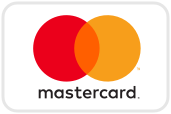Three Formulas to Determine Value
It is very important to understand how to determine the value of liquidation merchandise. Here are three formulas for doing this:
1. Percentage of Retail
The retail price of each item is listed on a manifest. The total retail is multiplied by a percentage. The percentage is determined by the quality of the goods (usually from 10% to 20%).
EXAMPLE: $100,000 retail X 10% = $10,000
If a manifest lists individual retail prices, your cost for each item can be determined with the same formula (individual item X percentage = your cost for the item).
2. Percentage of Cost
The wholesale cost of each item is listed on a manifest. The total cost is multiplied by a percentage. The percentage is determined by the quality of the goods (usually from 20% to 35%).
EXAMPLE: $50,000 cost X 20% = $ 10,000
If a manifest lists individual cost prices, your cost for each item can be determined with the same formula (individual item X percentage = your cost for the item).
Note: The percentage is higher when multiplying by cost, as the total Cost Factor is usually lower. The Net Cost to the buyer remains comparable.
3. Bulk / Volume
A flat rate for a given amount of volume, such as a truckload or a pallet. If there is no list of the contents, the price per load is considerably lower.
EXAMPLE: One truckload of salvage goods = one price, “a pig in a poke.”
The three factors listed above are used to determine your net cost for a salvage load. The factors to be used will be determined by the bookkeeping procedures used by the original source of the goods. Some companies prefer to know their exact cost and write off the goods from their inventory accordingly. Other companies prefer to avoid the cost associated with the line item process.
UPC technology has simplified the inventory account process. Bulk shipments are becoming less common, compared to earlier years.





